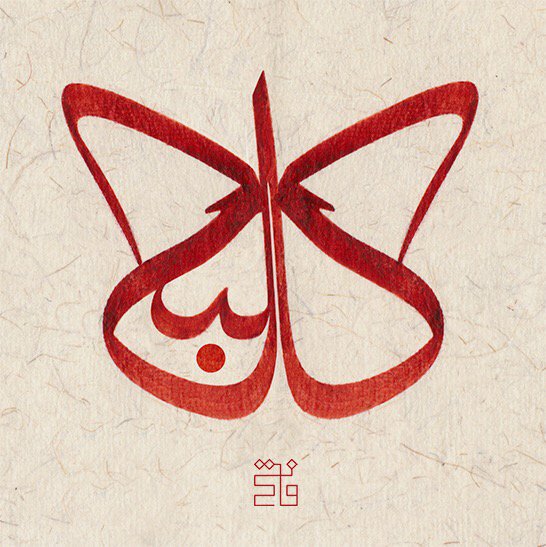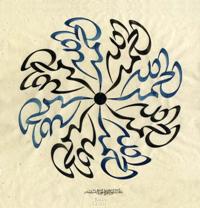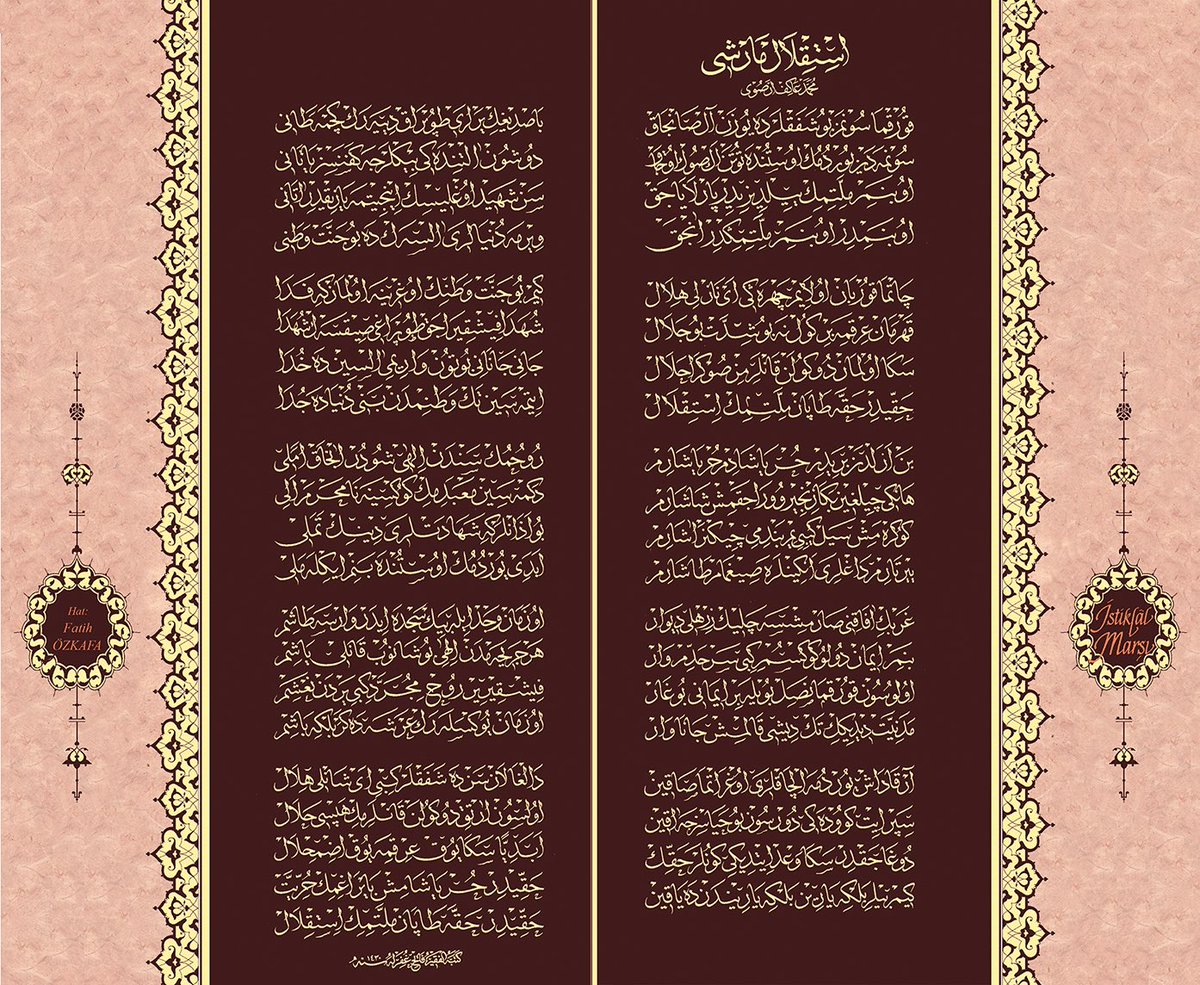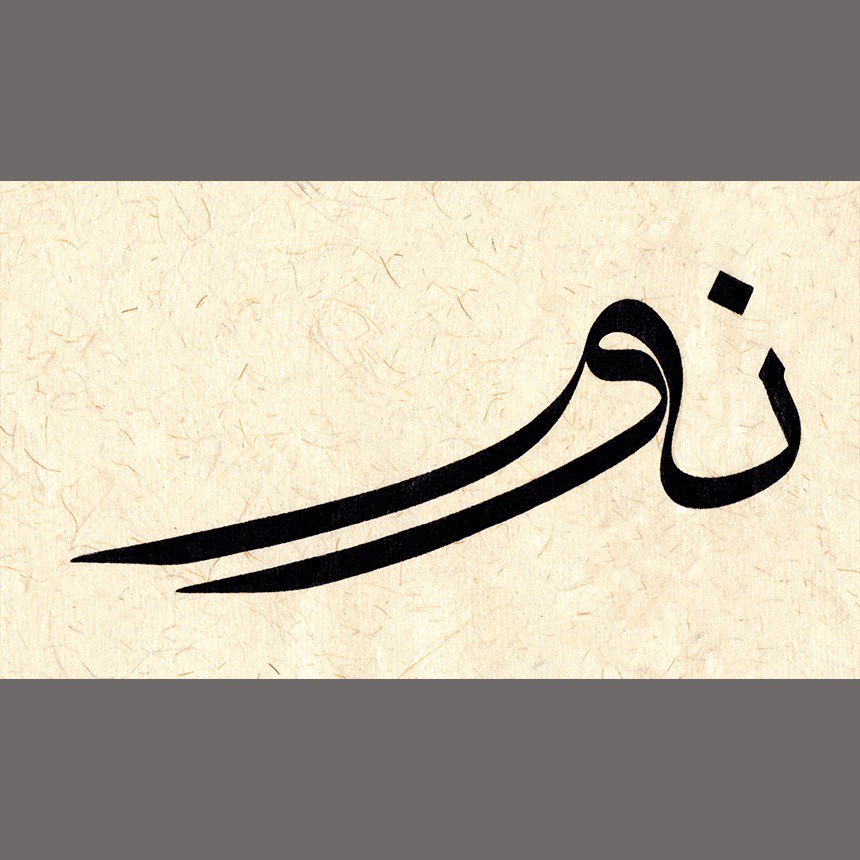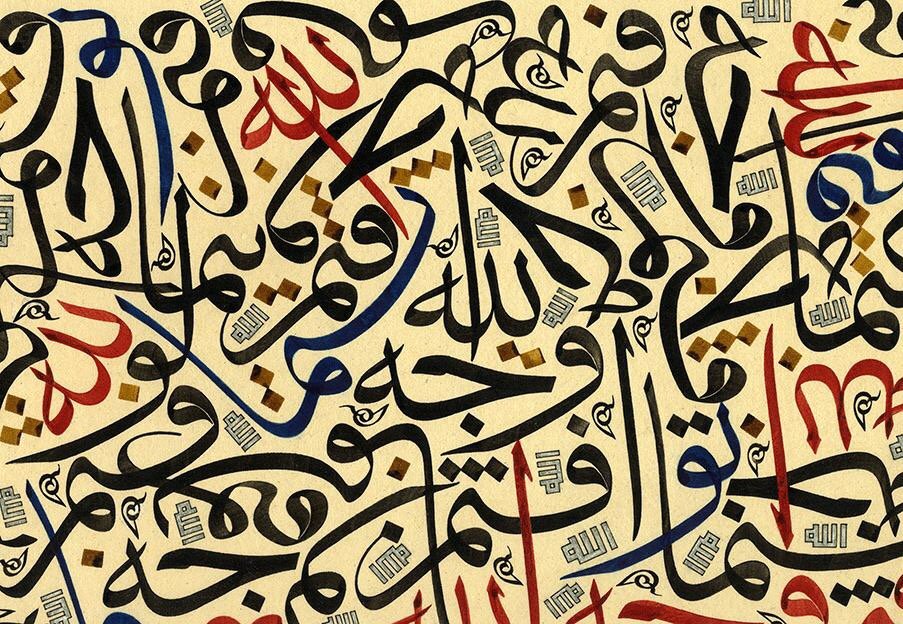There is an old saying that, “the Quran was revealed in Mecca, recited in Eqypt and written in Istanbul.” In Turkey, calligraphy or Hat Sanat (turkish) has always enjoyed an unique relationship with Islam and spirituality.
The conquest of Constantinople in the 15th century marked the beginning of Ottoman calligraphy with a succession of master calligraphers starting with Şeyh Hamdullah (833-926), also known as the father of modern Turkish calligraphy. The legacy of the masters continue to thrive and evolve today in modern Turkey. Calligraphy is not only taught at universities, but also at cafes and streets where students from all over the world gather for a lesson.
To learn about the importance of the art and practice of calligraphy in Turkey, I recently interviewed master calligrapher, professor Fatih Özkafa from Konya, Turkey. Dr. Özkafa received his Ph.D in Turkish Arts from the University of Selçuk. He has won many accolades for his work and has exhibited all over the world, including U.A.E, Egypt, Iran and Turkey. Currently, he is an associate professor at Marmara University in Istanbul, Turkey.
What is it like to study calligraphy in Turkey?
At the beginning, Arabic writing did not have an artistic feature. The fact that the Qur'an was revealed in Arabic fourteen centuries ago increased the value of Arabic writing. The first Muslims began to pay more attention to the script because of the need to record the verses. At the same time, these people were the companions and the closest friends of Muhammad (PBUH), the Prophet of Islam. In Islamic history, the first writers of the verses are called "The Revelation Clerks." Some of these people were more effective in the beauty of their writing. Ali and Osman were remarkable persons on the way to provide an artistic identity to Arabic writing.
As a result of the spread of Islam beyond the Arabian Peninsula over time, non-Arab nations began to adopt and use the Arabic script, which is also the Quranic script. In this respect, Arabic writing has become not just a writing for a certain tribe or nation, but a common Islamic writing. At the same time, the aesthetic pleasures of different nations and cultures were reflected in the writings. In this regard, we can say that Turkish aesthetics had a very important influence on this writing. After the Turks became Muslims, they established enduring and powerful states. Of course, the most important of these was the Ottoman Empire. The Turks, who have served Islamic civilization for more than a thousand years, have made very important breakthroughs at turning this writing (Islamic calligraphy) into an art. These breakthroughs gained momentum after the Conquest of Istanbul, and Şeyh Hamdullah who was the calligraphy teacher for Sultan Beyazit II, established a brand new calligraphy school in Istanbul. With this school, the Turkish calligraphy art was born. After the 16th century, generally all Muslim calligraphers began to take Ottoman calligraphers as examples. This has continued to the present day.
Therefore, Istanbul became the capital of calligraphy as well as the capital of Islamic civilization with its architecture, knowledge and wisdom. Therefore, I think that because Istanbul is where the Turkish aesthetics are applied to Calligraphy, it has been a privilege for me to engage with calligraphy in Turkey, in other words in Istanbul, and it is a great opportunity.
What inspired you to study calligraphy?
Since my childhood, the fine arts like painting, photography, hand drawing, and writing have always drawn my interest, so I go to all exhibitions without distinction among these arts. I was also curious about the decorations, and everything about the aesthetics attracted me. Then a friend of mine saw a piece of news in a newspaper about a calligraphy course that had started and administered by the Ministry of Culture. He informed me about it because he knew I was curious about these things so I applied immediately without thinking. Thus, I began to receive calligraphy art classes while I was a university student. I did not know much about the person who was teaching the class, initially. But, I would come to know in time that the person was Mr. Huseyin Oksuz, who was one of the exceptional names in this art. In other words, to my benefit, I had become his student without knowing much about his reputation.
What is the most important thing you learned from your teacher?
Our teacher taught us so much that we came to appreciate the value of his teachings over the years. Of course, the most important was patience and perseverance, because it takes years to learn this. You learn slowly countless number of pillars as the years go by such as rigor, calmness, not to hurry, being curious, being tolerant and modest, examining the works of old masters, writing abundantly, practicing often, using the best materials, not doing this art for monetary gain or fame. It is very important to know that you make progress only by paying attention and understanding well what you learn. There is no magical account book, and no specific time. It runs slowly as if it were going to last forever, but you work non-stop. You do not consider the consequences. The calligraphy training is similar to a sort of learning by observation and living in a Sufi house. In connection with this, many years ago I published a science article on the similarities of calligraphy to Sufi culture. Indeed, there is a very close relationship between the methods of education of this art and the methods of the Sufis. Most of the old calligraphers were either dervish or Sufi sheikh at the same time.
What is the most challenging thing in calligraphy?
In the calligraphy art, you cannot say "I have now become a great calligrapher". You do not see yourself as enough no matter what age you reach. Most of the time, you will notice many defects in your writings when you look at them after 3-5 months. Also, if you take a day off from writing, you will feel inexperienced, the next day. It is also very difficult to have the perfect materials. The paper, the ink, and the pen have to pass through certain processes. If one of them has a bad texture, it will be reflected on the art. After the writing is finished, there is a process called correction, which sometimes takes months. This is like digging a well with a needle. Mistakes such as the thickness of a hair are carefully corrected. In order to explain this sensitivity, some calligraphers say, "The writing should not have any roughness even as small as a flea's foot."
In the art of calligraphy, the measure of the letters is also very important. A calligraphy artist works for years to write according to these measures. So, you cannot enlarge or shrink the letters as you wish, you cannot shorten them or elongate them as you feel. There are countless rules. But these rules further enhance the taste of this art. Because there are as many exceptions as well as rules, and as long as you know them well, you can make countless designs for the same text. In this respect, the calligraphy art is a bit of a closed-circuit art. It is most appealing to the calligraphers, that is, to those who know the rules of calligraphy very well. Good calligraphy art has many subtleties and fine points that others will not realize and appreciate. Perhaps there are subtleties that only a calligrapher can decode in designs that many people see as ordinary. Therefore, if someone is just an art collector or an art critic, he or she should not make random comments about the art of calligraphy.
Please visit Dr. Özkafa's website for more information about his work: http://www.fatihozkafa.com/
Translation Credit: Murat Cil, Ph.D
Gallery of Dr. Özkafa's work:





